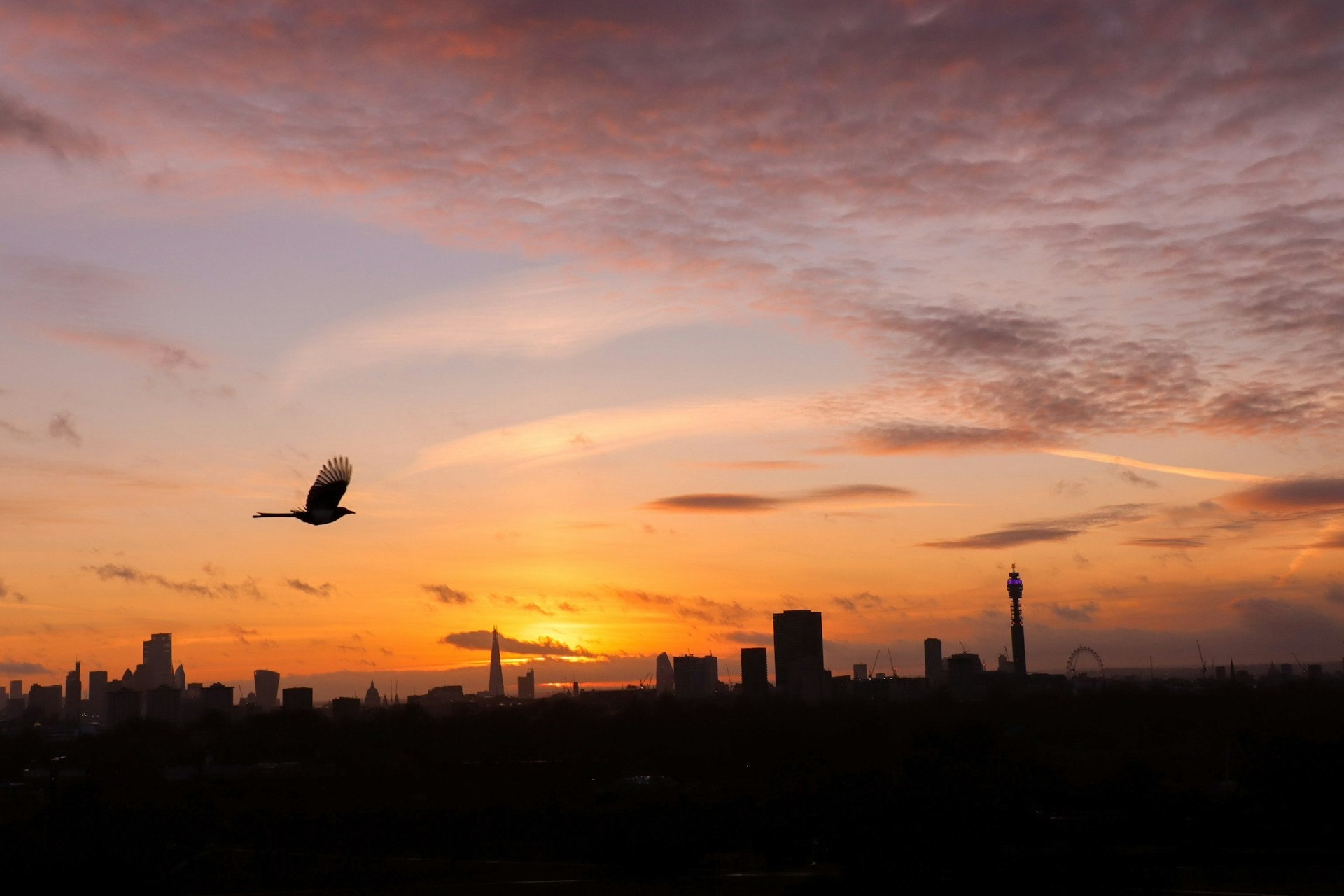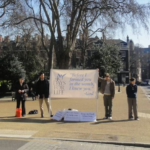
“Imagine this is the Sun,” I say, holding up an orange. I am at the foot of Primrose Hill in London with 20-odd people. They have followed me from Cecil Sharp House, the venue for “Sunday Papers Live”, an event that aims to bring every section of the Sunday papers to life. We have been sitting about on sofas, listening to talks on politics, sport, travel – and now I intend to enliven something from the world of science by walking the 800 metres to the summit of the hill, pacing out a scale model of the Solar System.
Four metres up the path, I hold up a peppercorn to represent Mercury; four more metres and a dry-roast peanut for Venus. You get the idea. The Earth, which is Venus’s twin in size, though nothing else, gets its own dry-roast peanut three metres further on. “We call Earth the Blue Planet,” I say. “But how many blue planets are there?”
“Two?” someone ventures.
“Three,” I say. “Earth, Uranus and Neptune.”
“Water makes Earth blue, right?” someone else asks. “So what makes the other planets blue?”
“Methane.”
After the inner planets – Mercury, Venus, Earth and Mars – which are crowded together, the gaps get larger: 39 metres from Mars to Jupiter, 47 more to the ringed planet Saturn, and 104 metres from Saturn to our next planet.
Uranus was discovered from a back garden in Bath by a freelance musician. William Herschel had come to Bath from Hanover with his sister Caroline (who, incidentally, discovered more comets than any other woman apart from her near-namesake Carolyn Shoemaker). Though William worked as a church organist, his passion was building telescopes. And it was with one of them that he spotted a fuzzy disc on 13 March 1781.
It was the first planet unknown to the ancients – the Babylonians, Greeks and Egyptians – and the first discovered in the age of the telescope. Overnight, it doubled the size of the Solar System. Herschel, an immigrant who yearned to be accepted by his adopted country, christened it George’s Star, after George III. Imagine if it had stuck. Going out from Earth, we’d have Mars, Jupiter, Saturn – and George.
It is another 114 metres to Neptune, the outermost planet since Pluto was demoted to a “dwarf planet” in 2006. Arguably, it was discovered by a man sitting at a desk in Paris with a quill pen, in the 19th century. Urbain Le Verrier set out to explain Uranus’s puzzling motion. Whenever its orbit was extrapolated to predict where it would be in the future, the planet was never there. Le Verrier became convinced there was another planet, further from the Sun, whose gravity was tugging on Uranus.
Because gravity is a “universal” force with which every mass pulls every mass, Le Verrier, in order to locate the new world, had to subtract the pull on Uranus from every other planet. Though he succeeded in the gargantuan task, the director of the Paris Observatory would not mount a search. National observatories like Paris and Greenwich determined star positions for navigation. Nobody before had ever predicted an unknown planet.
In desperation, Le Verrier wrote to Johann Galle, a lowly astronomer in Berlin. Galle’s boss was celebrating his 55th birthday, so Galle got to use the Berlin telescope. Within an hour he found the new planet, exactly where Le Verrier predicted, on 23 September 1846.
Though the discovery of Uranus was a sensation, the discovery of Neptune that day was an event of a different order. It revealed the ability of science to predict the existence of things nobody had previously suspected. And it showed the power of Newton’s law of gravity in not only explaining what we see, but revealing what we cannot see. Today, we know the visible stars and galaxies are outweighed by a factor of six or seven by invisible “dark matter”. Neptune was the dark matter of its day.
We reach the summit of Primrose Hill and look down to where I held up my orange. “How far away would the nearest star be?” I ask.
“South London?”
“Edinburgh?”
I shake my head: “Beijing.” As Douglas Adams so memorably remarked in The Hitchhiker’s Guide to the Galaxy, “Space is big. Really big. You just won’t believe how vastly hugely mind-bogglingly big it is. I mean, you may think it’s a long way down the road to the chemist, but that’s just peanuts to space.”
This article is from New Humanist’s spring 2024 issue. Subscribe now.

